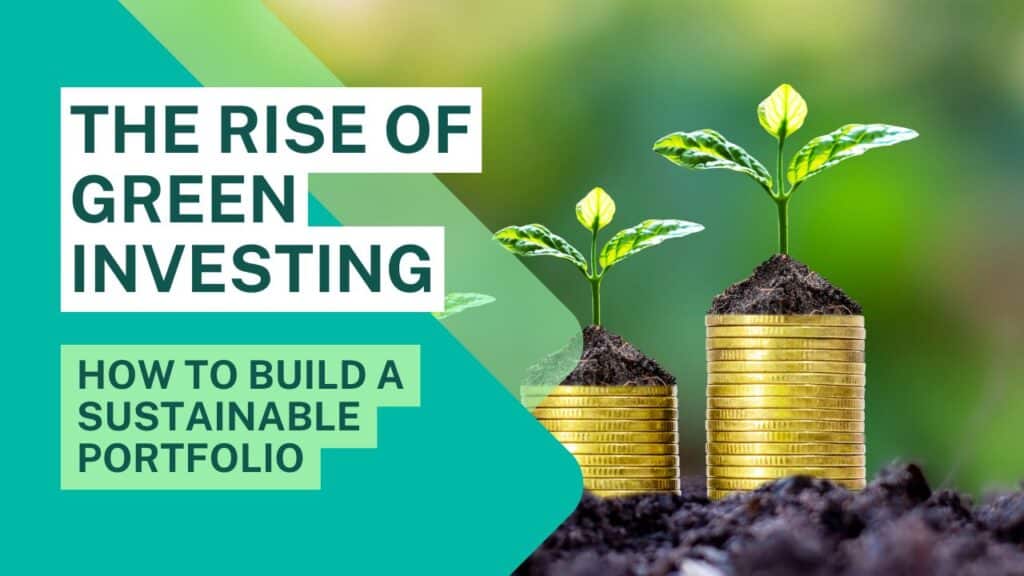Green investing, also known as sustainable or ESG (Environmental, Social, and Governance) investing, is rapidly gaining traction as investors seek to align their portfolios with their values. Unlike traditional investing, which prioritizes financial returns, green investing integrates environmental and social impact considerations alongside profitability.
With increasing global concerns about climate change, resource depletion, and corporate responsibility, sustainable investing is no longer just an ethical choice—it’s a financially smart one. In this blog, we’ll explore how green investing compares to traditional investing, its benefits and challenges, and how you can build a sustainable portfolio.
Understanding Green Investing
Green investing focuses on companies that prioritize sustainability, whether through renewable energy, low-carbon technologies, ethical supply chains, or social responsibility initiatives. It encompasses various approaches, including:
- ESG Investing – Incorporates environmental, social, and governance factors into investment decisions.
- Socially Responsible Investing (SRI) – Avoids companies engaged in harmful activities like fossil fuels, tobacco, and deforestation.
- Impact Investing – Actively invests in businesses and projects that generate measurable positive social or environmental outcomes.
- Green Bonds – Fixed-income investments specifically used to fund eco-friendly projects.
Green Investing vs. Traditional Investing
Traditional investing focuses on maximizing returns without considering environmental or social consequences. However, green investing challenges the notion that financial performance and sustainability are mutually exclusive.
Key Differences Between Green and Traditional Investing
- Focus: Traditional investing prioritizes profit maximization, while green investing seeks both profit and sustainability.
- Risk Consideration: Traditional investments primarily assess market and financial risk, whereas green investments also factor in environmental and regulatory risks.
- Industry Scope: Green investing focuses on sustainable industries such as renewable energy and ethical companies, unlike traditional investing, which spans all sectors.
- Growth Potential: Traditional investments depend on market trends, while green investments benefit from increasing global sustainability efforts.
- Ethical Considerations: Traditional investing does not necessarily factor in ethics, whereas green investing is built upon ethical investment principles.
The Benefits of Green Investing
1. Long-Term Profitability:
Sustainable companies often have stronger risk management practices and long-term growth potential. For example, Tesla (TSLA) has outperformed many traditional automakers due to its innovation in electric vehicles.
2. Lower Regulatory Risk:
Governments worldwide are enforcing stricter environmental regulations. Companies with strong ESG practices are less likely to face fines, legal issues, or reputational damage.
3. Growing Market Demand:
Consumers and businesses are increasingly favoring sustainable products and services. Companies prioritizing sustainability, like Beyond Meat (BYND), have gained strong investor interest.
4. Resilience to Economic Shocks:
During crises, ESG-focused companies often perform better due to strong governance and risk mitigation strategies. Studies have shown that sustainable funds outperformed traditional funds during the COVID-19 market downturn.
Challenges of Green Investing
1. Greenwashing:
Some companies exaggerate their sustainability efforts to attract investors. It’s crucial to research ESG ratings and third-party evaluations before investing.
2. Limited Investment Options:
Although the green sector is expanding, some industries still lack sufficient sustainable alternatives.
3. Potentially Lower Short-Term Returns:
Sustainable investments may take longer to yield significant profits, unlike some high-return traditional investments.
How to Build a Sustainable Portfolio
1. Identify Your Investment Goals:
Determine your priorities—whether it’s clean energy, ethical labor practices, or corporate transparency.
2. Research ESG Ratings:
Use platforms like MSCI ESG Ratings, Sustainalytics, or the Dow Jones Sustainability Index to assess a company’s ESG performance.
3. Diversify Your Investments:
Invest in a mix of green stocks, ESG ETFs, and green bonds to balance risk and return.
4. Monitor and Adjust:
Continuously assess your portfolio’s performance and adapt to emerging sustainable investment trends.
Green investing is more than just an ethical choice—it’s a forward-thinking financial strategy. As global sustainability efforts intensify, companies that prioritize ESG principles are expected to thrive. By understanding the benefits and challenges of green investing and building a diversified sustainable portfolio, investors can align their financial goals with positive environmental and social impact.

